Photo by Brian Prose
Plum Run Prairie
Plum Run Prairie. Plum Run is a 138-acre preserve located in Adams County. It is one of the larger prairies remaining in Ohio and is unique in that it protects two distinct but equally rare prairie plant communities: the tall grass prairie and the cedar glade prairie. This preserve is home to 11 state-listed rare and endangered plant species. Plum Run features 2.5 miles of hiking trail through the prairie and the woodlands.
Hiking: Sunrise to Sunset
Address: Mendenhall Rd, Peebles, OH 45660
Download and Go! - Hiking Guide and More Information
A dog owner's guide to hiking the Arc of Appalachia
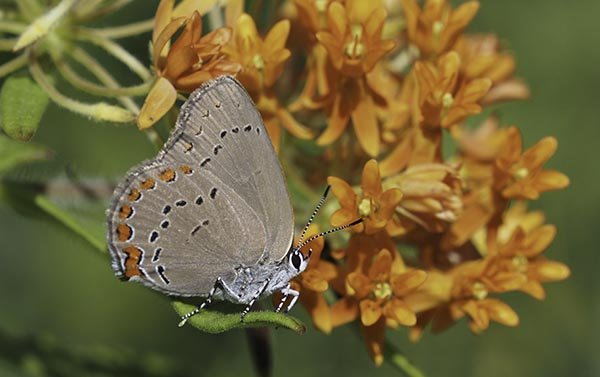
Coral Hairstreak - Photo by Jeff White

Dramatic skies over Plum Run
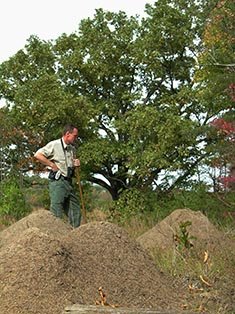
Allegheny Ant Mounds
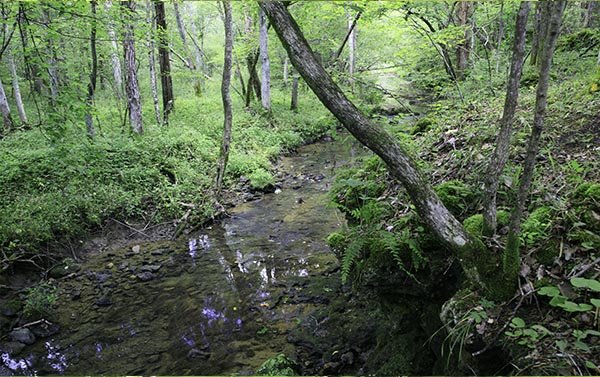
Plum Run's forested waterway

Yellow Breasted Chat - Photo by Jeff White
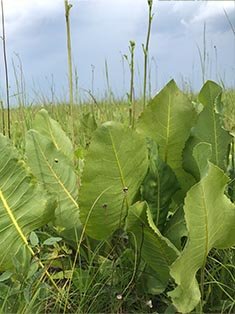
Prairie Dock

Photo by Jeff White
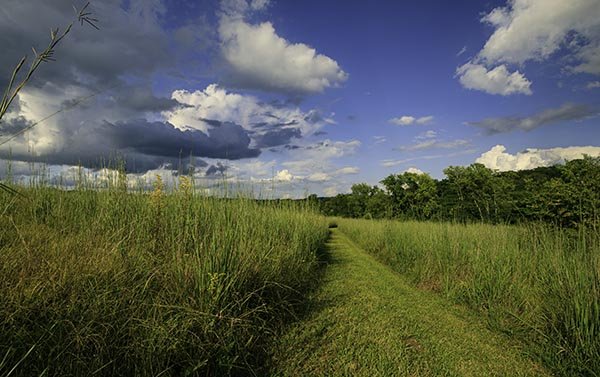
Summer Prairie Grasses by Brian Prose

Crested Coralroot Orchid
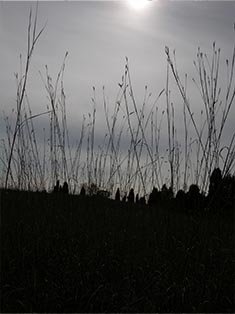
Big Bluestem in seed against darkening sky
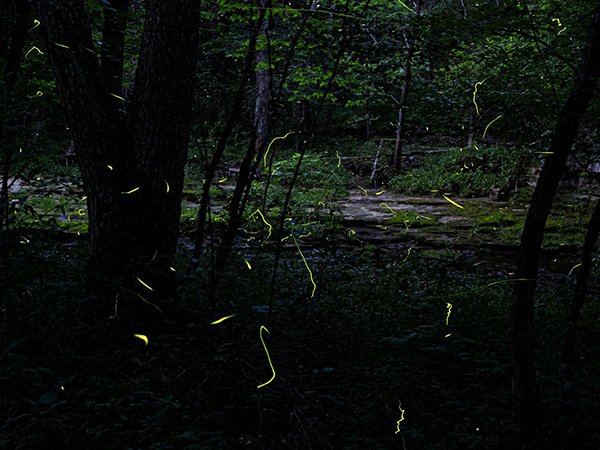
Fireflies at Plum Run by Jeff White
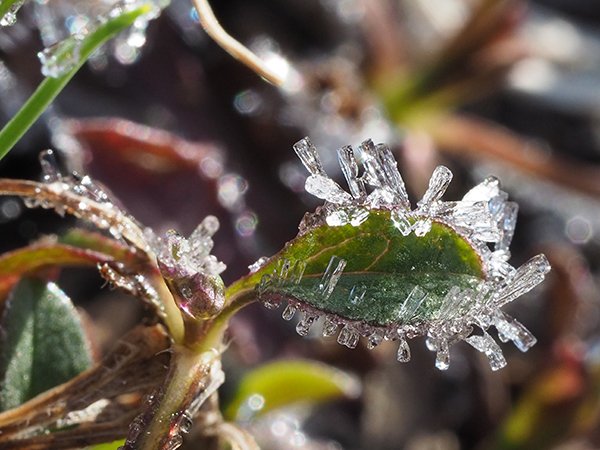
Light Frost at Plum Run by Jeff White

Dewdrops caught in spiderweb by Jeff White
Two Distinct Prairie Communities in One. Plum Run is unique in that it protects two distinct but equally rare prairie plant communities: the tall grass prairie and the cedar glade prairie. Both prairie types are now decimated in the Eastern United States and have nearly disappeared. The tall grass prairies were plowed down for croplands, and the cedar glades were disced and replanted with non-native grasses to serve as marginal pasture lands for grazing.
Tall Grass Prairies to Ohio’s West. Although Ohio has had a long history of being dominated by forests, two types of prairies helped shape the state’s landscape. One is the fire-sculpted tallgrass prairie that once flourished west of Indiana. Tallgrass prairies have been known to tower 8 to 10 feet in height, while below ground the grasses’ extensive root systems created deep, rich, virgin soils that were renowned in the Midwest. Attracted to these highly fertile soils, the last 200 years of agriculture has displaced more than 95% of America’s tallgrass prairies.
The tallgrass prairie at Plum Run is an isolated geographic outlier and its existence here is a bit of a mystery. The railroad that dissects Plum Run may offer one possible explanation. In earlier times, flares were often used to set fires along railroad tracks to clear out plant growth. Fire-tolerant tallgrass prairie species would not only have survived these railroad fires, but they would have thrived.
Cedar Glades to Ohio’s South. Cedar glade prairies, also known as cedar barrens, grow on thin, dry, impoverished soils derived from limestone bedrock. In such challenging conditions, most trees struggle to survive. A notable exception is the red cedar. This tree tolerates both drought and heat and grows right alongside the prairie’s grasses and wildflowers. It is an uneasy alliance, however, because cedars can completely supplant them. Cedar glades are usually very small in size, and are found in less than 100 known locations. Like the tallgrass prairie, cedar glades have been largely destroyed by agricultural activities–often by being converted into marginal pasture lands.
Plum Run – the Confluence of Two Prairies. Due to Ohio’s relatively wet climate in modern times, prairies would still be shrinking even if they had not been nearly destroyed by modern land uses. The last time prairies experienced expansion in Ohio was during a hot and dry climatic period that occurred 4,000 to 8,000 years ago. Today, all that remains are isolated “prairie islands” that were left behind when the climate cooled and tallgrass prairies retreated westward while the cedar barrens retracted southward. Global warming may yet reverse their retreats, which is one of many good reasons why these complex communities should be protected.
Plum Run is the only known place in Ohio that fully displays characteristics of both the tallgrass prairie and the cedar glade prairie. This makes Plum Run a living museum for two rare and nearly vanquished plant communities and a site of exceptionally high plant and insect biodiversity.
A Unique Assemblage of Prairie Plants. Plum Run is home to tall majestic grasses such as Indian grass and big bluestem, both species borrowed from the tall grass prairie communities of the West. These grasses create the mesmerizing “canopy” that towers over the heads of visitors in late summer and fall. Plum Run also shelters a diverse array of prairie plants that are contributed from the cedar glades of the South. These include American aloe (Manfreda virginica), three blazing star species (Liatris spicata, Liatris aspera, Liatris squarrosa), rattlesnake master (Eryngium yuccifolium), obedient plant (Physostegia virginiana), spider milkweed (Asclepias viridis), green milkweed (Asclepias viridiflora), purple coneflower (Echinacea purpurea), and prairie coneflower (Ratibida pinnata).
We recommend this private blog on Plum Run for nature enthusiasts as we can’t think of a better or more thoroughly illustrated overview of Plum Run’s beauty and biodiversity.
Endangered Plants in Miniature. Of Plum Run’s 11 state-listed rare and endangered species, three of them are incredibly tiny mustards, the entire plants often less than ½ inch across Carolina whitlow grass (Draba reptans), wedge-leaf whitlow grass (Draba cuneifolia), and Michaeux’s gladecress (Leavenworthia uniflora). In early spring, these vulnerable plants form tiny rosettes on thin powdery soils that have trouble producing life of any kind. There they produce a few seeds on stems less than an inch high, and then die to begin their cycle anew. They belong to the Brassica family, and are thus related to the cabbage and broccoli of familiar dinner fare. To appreciate them, it is best to explore the trails in late March with a magnifying glass in hand.
A Home for a Rare Butterfly. Dotting the open fields are numerous Allegheny mound ant colonies of immense size, often over two feet across and high. These large mounds are a signature landscape feature of the prairie. Allegheny mound ants have an extraordinary symbiotic relationship with the Edwards’ hairstreak butterfly, one of the prairie’s many rare butterfly species. Completely dependent on these ants, the nearly helpless caterpillars are guided up young scrubby oaks trees by the ants where they graze during the day and are then escorted back to the colony beneath the ground at night to protect them from predators. Without having an intact prairie habitat to provide secure homes for the mound-building ant, the rare Edwards’ hairstreak would perish from the earth.
Plum Run Woodlands. The fencerows are dominated by trees that are well adapted to these dry, often alkaline soils, such as Virginia scrub pine, chinquapin oak, and hackberry. Look for interesting shrubs such as fragrant sumac, ninebark, and Carolina buckthorn that flourish here. In the riparian forest, another unusual understory tree can be found – wafer ash or common hop tree. Not a true ash, wafer ash is actually in the citrus family, and its foliage is eaten by the caterpillars of the giant swallowtail. If you are lucky, you may see these immense butterflies nectaring in summer in the open prairie.
Deeper Information: You may enjoy visiting this Footpathbog developed by Patrick Burns: Plum Run Prairie.

